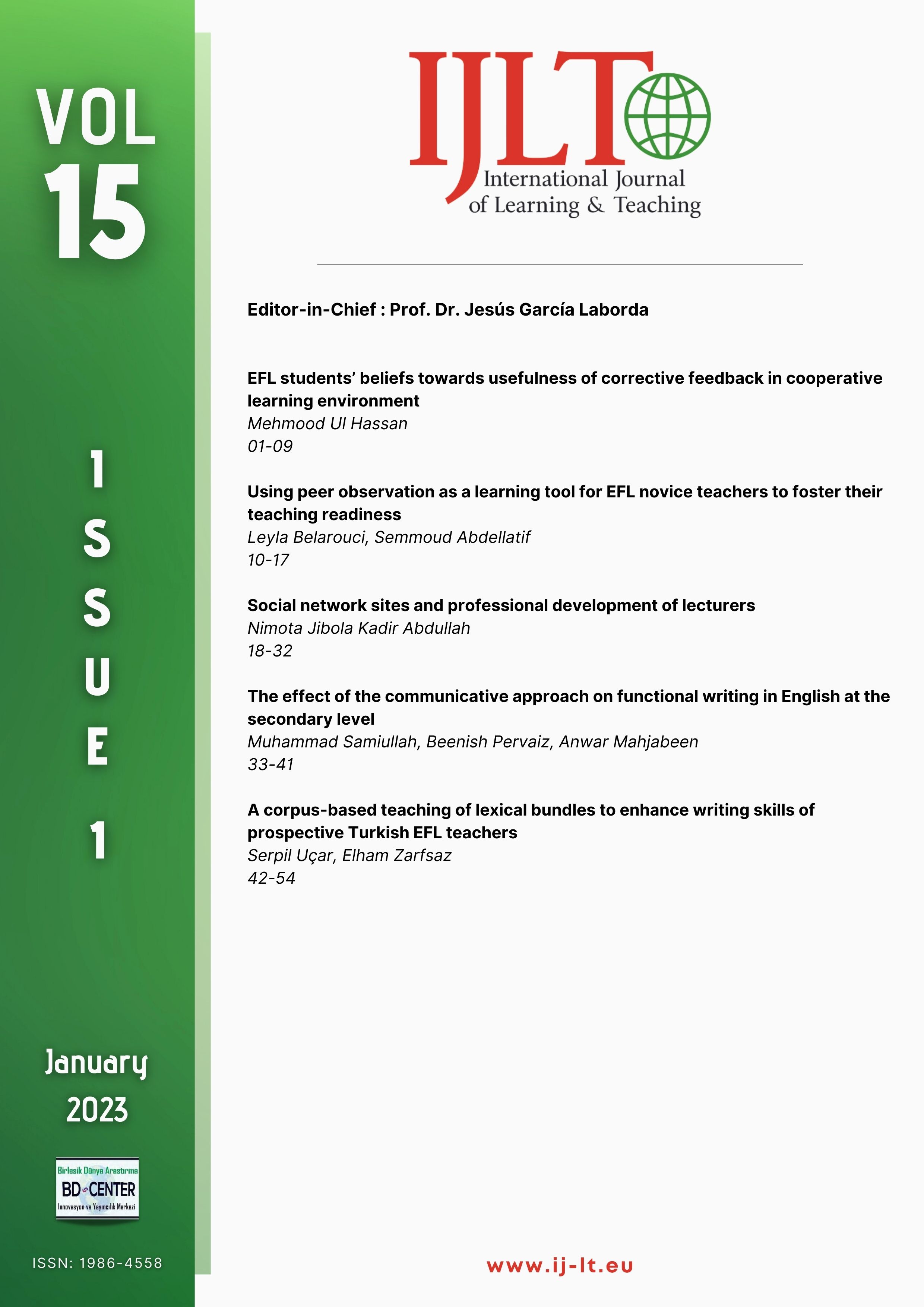The effect of the communicative approach on functional writing in English at the secondary level
Main Article Content
Abstract
The communicative method is founded on the premise that learning a language is effective when learners are forced to convey actual meaning. The major goal of communicative language education approaches is to train students to be confident communicators in a variety of real-life situations by working together. The purpose of this study was to see how a communicative strategy affected Functional writing in Secondary school English. In this work, the pre-test, post-test and non-Identical control group approach was employed, which is a quasi-experimental approach. The total number of participants in the trial was 47. It has been found that there is exceptional improvement in students by an experimental process as gain in every aspect, that is, grammar, vocabulary, mechanics, fluency, and form is very much high. Students studying English at the secondary school, college, or university level may benefit from a communicative approach to higher-level learning.
Keywords: Communicative strategy, English, functional writing;
Downloads
Article Details

This work is licensed under a Creative Commons Attribution-NonCommercial-NoDerivatives 4.0 International License.
Authors who publish with this journal agree to the following terms:
- Authors retain copyright and grant the journal right of first publication with the work simultaneously licensed under a Creative Commons Attribution License that allows others to share the work with an acknowledgement of the work's authorship and initial publication in this journal.
- Authors are able to enter into separate, additional contractual arrangements for the non-exclusive distribution of the journal's published version of the work (e.g., post it to an institutional repository or publish it in a book), with an acknowledgement of its initial publication in this journal.
- Authors are permitted and encouraged to post their work online (e.g., in institutional repositories or on their website) prior to and during the submission process, as it can lead to productive exchanges, as well as earlier and greater citation of published work (SeeThe Effect of Open Access).
